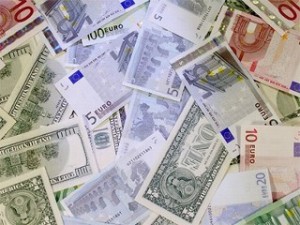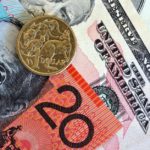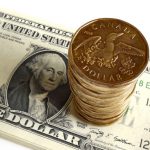 Yesterday’s trade saw EUR/USD within the range of 1.0550-1.0651. The daily high has also been the highest level since March 12th, when a high of 1.0683 was recorded. The pair closed at 1.0597, up 0.26% on a daily basis and extending gains from Monday.
Yesterday’s trade saw EUR/USD within the range of 1.0550-1.0651. The daily high has also been the highest level since March 12th, when a high of 1.0683 was recorded. The pair closed at 1.0597, up 0.26% on a daily basis and extending gains from Monday.
At 7:56 GMT today EUR/USD was up 0.17% for the day to trade at 1.0612. The pair touched a daily high at 1.0619 at 7:58 GMT.
Fundamentals
Euro area
Balance of Trade
The surplus on Euro areas seasonally adjusted trade balance probably narrowed to EUR 21.1 billion in January, according to the median forecast by experts, from a surplus figure of EUR 23.3 billion in December.
The regions trade surplus, without a seasonal adjustment, was reported to have reached EUR 24.3 billion in December, or the highest figure on record, following a surplus of EUR 21.2 billion in November. Total exports rose at an annualized rate of 8% to reach EUR 161.5 billion in December, while imports went up 2% to EUR 137.2 billion.
The surplus on regions extra-EU28 trade balance amounted to EUR 12.4 billion in December 2014 compared to a surplus of EUR 8.1 billion in December 2013. The highest increases in EU28 exports were registered with China (+11% during the first 11 months in 2014 compared to the same period a year ago), South Korea (+8%) and the United States (+6%). As for EU28 imports, the highest increases were observed with South Korea and China (both +8%) and Turkey (+7%).
Euro zones balance of trade produces regular surpluses mainly due to the high export of manufactured goods, such as machinery and vehicles. At the same time, the region is a net importer of energy and raw materials. Member states such as Germany, Italy, France and Netherlands play a key role in total trade.
The trade balance, as an indicator, measures the difference in value between the region’s exported and imported goods and services during the reported period. It reflects the net export of goods and services, or one of the components to form the Gross Domestic Product. Generally, exports reflect economic growth, while imports indicate domestic demand. In case the trade balance surplus narrowed more than anticipated in January, this would certainly have a bearish impact on the euro. Eurostat is to publish the official trade data at 10:00 GMT.
United States
Federal Reserve decision on policy
The Federal Open Market Committee (FOMC) will probably keep its benchmark interest rate unchanged within the range 0%-0.25% for a 49th consecutive meeting, after the end of the Quantitative Easing cycle, according to the median forecast by experts.
During her testimony before the Senate Banking Committee last month Federal Reserve Chair Janet Yellen said that the bank was ready to consider interest rate hikes on a meeting by meeting basis, in case US economic conditions continued improving. According to extracts from Yellens Semiannual Monetary Policy Report before the Congress: “It continues to be the FOMCs assessment that even after employment and inflation are near levels consistent with our dual mandate, economic conditions may, for some time, warrant keeping the federal funds rate below levels the Committee views as normal in the longer run. It is possible, for example, that it may be necessary for the federal funds rate to run temporarily below its normal longer-run level because the residual effects of the financial crisis may continue to weigh on economic activity. As such factors continue to dissipate, we would expect the federal funds rate to move toward its longer-run normal level. In response to unforeseen developments, the Committee will adjust the target range for the federal funds rate to best promote the achievement of maximum employment and 2 percent inflation.”
“The FOMC intends to adjust the stance of monetary policy during normalization primarily by changing its target range for the federal funds rate and not by actively managing the Federal Reserves balance sheet. The Committee is confident that it has the tools it needs to raise short-term interest rates when it becomes appropriate to do so and to maintain reasonable control of the level of short-term interest rates as policy continues to firm thereafter, even though the level of reserves held by depository institutions is likely to diminish only gradually.”
“In sum, since the July 2014 Monetary Policy Report, there has been important progress toward the FOMCs objective of maximum employment. However, despite this improvement, too many Americans remain unemployed or underemployed, wage growth is still sluggish, and inflation remains well below our longer-run objective.”
The minutes from Feds policy meeting held on January 27th-28th revealed policy makers were concerned that a sooner increase in borrowing costs could hinder economic recovery. According to an extract from the January minutes: “Participants discussed the tradeoffs between the risks that would be associated with departing from the effective lower bound later and those that would be associated with departing earlier. Several participants noted that a late departure could result in the stance of monetary policy becoming excessively accommodative, leading to undesirably high inflation. It was also suggested that maintaining the federal funds rate at its effective lower bound for an extended period or raising it rapidly, if that proved necessary, could adversely affect financial stability. Some participants were concerned that a decision to delay the commencement of tightening could be perceived as indicating that an overly accommodative policy is likely to prevail during the firming phase. In connection with the risks associated with an early start to policy normalization, many participants observed that a premature increase in rates might damp the apparent solid recovery in real activity and labor market conditions, undermining progress toward the Committees objectives of maximum employment and 2 percent inflation.”
The FOMC will announce its official decision on policy at 18:00 GMT. A rate hike would surely boost demand for the US dollar.
At 18:30 GMT Janet Yellen is scheduled to take a statement at a press conference regarding monetary policy stance. Her tone will certainly influence greenbacks volatility, as a more hawkish tone will provide support, while a more dovish tone will lead to a sell-off.
Pivot Points
According to Binary Tribune’s daily analysis, the central pivot point for the pair is at 1.0599. In case EUR/USD manages to breach the first resistance level at 1.0649, it will probably continue up to test 1.0700. In case the second key resistance is broken, the pair will probably attempt to advance to 1.0750.
If EUR/USD manages to breach the first key support at 1.0548, it will probably continue to slide and test 1.0498. With this second key support broken, the movement to the downside will probably continue to 1.0447.
The mid-Pivot levels for today are as follows: M1 – 1.0473, M2 – 1.0523, M3 – 1.0574, M4 – 1.0624, M5 – 1.0675, M6 – 1.0725.
In weekly terms, the central pivot point is at 1.0621. The three key resistance levels are as follows: R1 – 1.0782, R2 – 1.1069, R3 – 1.1230. The three key support levels are: S1 – 1.0334, S2 – 1.0173, S3 – 0.9886.





